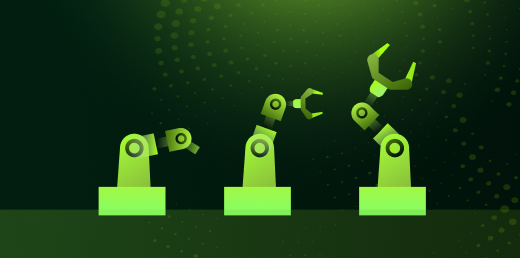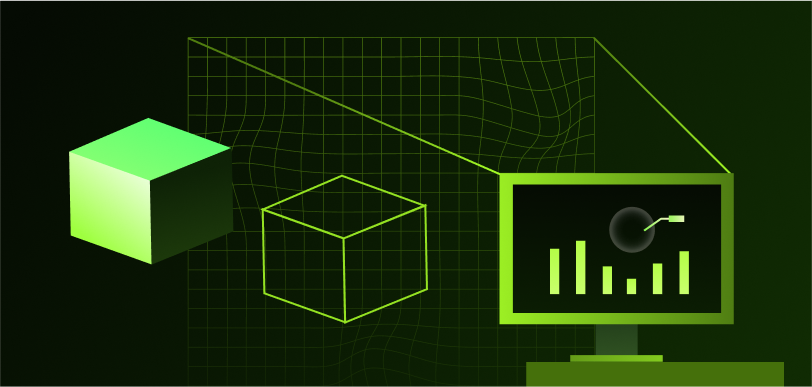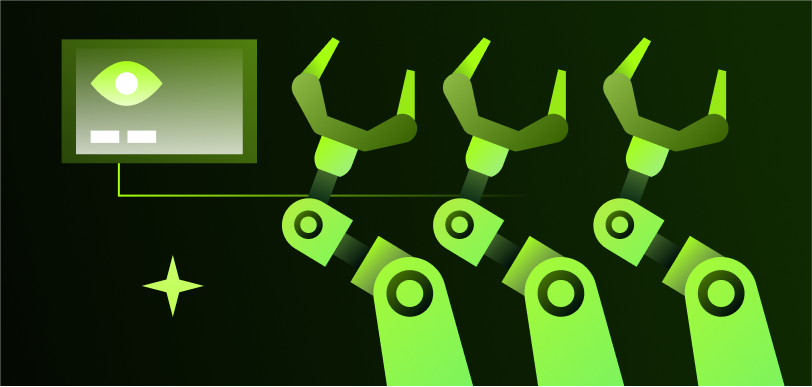The Industrial Metaverse and Simulating Collaboration
How NVIDIA’s Omniverse helps you build business resilience and rapidly deploy novel workflows for enhanced efficiency in your production ecosystem
As Industry 4.0 takes hold, two trends have accelerated: Robotic automation is intensifying human-robot interactions on the factory floor, while remote work has expanded the factory floor into the virtual realm. These dynamics create potential efficiency gains through new ways of working. But they also contain the risk of experiments going wrong.
How do you harness the power of these dynamics and mitigate your risks? Collaborating on new ideas can be tricky in the age of distributed teams, while experimentation in the physical world is both time-consuming and costly. Without overcoming these spatial-temporal constraints and developing efficient, novel work processes, you run the risk of falling behind competitors — or even crippling your production.

The key to mastering this problem is the industrial metaverse, which has become highly accessible thanks to NVIDIA’s Omniverse platform. Its physically accurate replicas and AI functionality enable remote teams to run countless simulations of “what-if” scenarios of your workers’ interactions with physical assets. You can use it to optimize your expanding production ecosystem in a virtual space before implementing it in the physical world.
So how does the industrial metaverse respond to the core trends and pressures of Industry 4.0?
PROCESSING POWER AND THE COMPLEXITY OF THE FACTORY FLOOR
Industry 4.0 coincides with the exponential growth in computing power that brought more advanced robotics to the factory floor. The intensified human-robot interactions on factory floors led to:
 |
 |
 |
|
Evolving ways of work |
Greater automation |
Escalating production speeds |
More recently, remote work has further complicated how your teams interact with your physical assets by distributing teams around the globe.
Taken all together, that puts increasing pressure on manufacturers to develop new ways of coordinating how their workers should negotiate the productive environment. But even if a new idea is good, the iterative process of tweaking it to perfection is time-consuming. Moreover, the window of opportunity to test new processes could be extremely short, as is the case for seasonal processes within industrialized agriculture. And prototyping the new equipment takes time and has high material costs, which may end up as a write-off if the idea doesn’t work out.
That boils down to a pressing need to take advantage of novel technology running up against the blocker of time constraints and geographic distribution. The way to overcome this impasse is to supplement the physical environment by replicating it in the virtual world.
REMOVE RISK WITH SIMULATION
Digital replicas of physical assets or processes, known as digital twins, are key to successfully implementing the industrial metaverse. Recent advances in processing capacity and real-time rendering have enabled new ways of interacting with those replicas in the industrial metaverse. You can make use of:
 |
 |
 |
|
True-to-life interactions in the virtual environment |
Virtual accessibility through screens or extended reality (XR) |
Real-time remote collaboration to develop new ideas |

Not only does that mean multiple actors can interact in a virtual production environment in real time, but they can quickly test different ways of interacting with the environment itself. That processing power also lets you run virtual tests even faster than in real time. That includes:
 |
 |
|
Prescriptive simulation: Testing of “what-if” scenarios of workflows using prescriptive analytics |
Robotic simulation: Accelerated training of robots for production using multiple scenarios |
The industrial metaverse sets you up for a virtuous cycle of ongoing optimization through simulation and automation on the factory floor. All that without endangering actual productive processes — removing the risk from experimentation.
BOOST PRODUCTIVITY AND BUSINESS RESILIENCE
By harnessing the industrial metaverse, you can replicate your entire production environment, and how different workflows can increase productivity or save costs. Your teams gain an unparalleled ability to develop new ideas about how to orchestrate production and collaboration — they can also test them in real time using physically accurate simulations with unlimited iterations. That saves you time and money on new ideas while boosting their reliability and reducing risks.
It has never been simpler to set up an industrial metaverse. NVIDIA’s Omniverse technology — powered by NVIDIA GPUs — gives you access to the most advanced tools for the industrial metaverse. With SoftServe, you have access to support throughout the entire deployment. It's why NVIDIA named us its Outstanding Impact Partner of the Year in 2023, and its 2024 Consulting Partner of the Year for the EMEA region.
If you are ready to develop new ways of working together in the virtual world to build business resilience and stay ahead of the competition, let’s talk.


